Unsurprisingly, as we headed North from Santa Rosalia, for the whole day we saw no yacht, ship or even fishing boat. There is maybe one village on this coast for the next 500 km.
Today we were sailing the first 150km of that. We had left before dawn to reach the next safe anchorage before nightfall and motor-sailed at 6 to 7 knots all the way to make it in time.
Heading North for the peak of summer would take us to remote bays and islands, so we had restocked the boat, got spares and (tried to) finish outstanding jobs while we were in port.
After leaving Loreto not quite a month ago, it had taken a week-long journey up the coast to reach San Marcos Island just within sight of Santa Rosalia. A rocky island with an open cast mine at one end, but at the other were idyllic caves and shaded beaches that attracted occasional visitors from across the bay as well as from the miner’s village. One night we even observed a small two story charter boat come in and set up dining tables for sunset dinner on the beach.
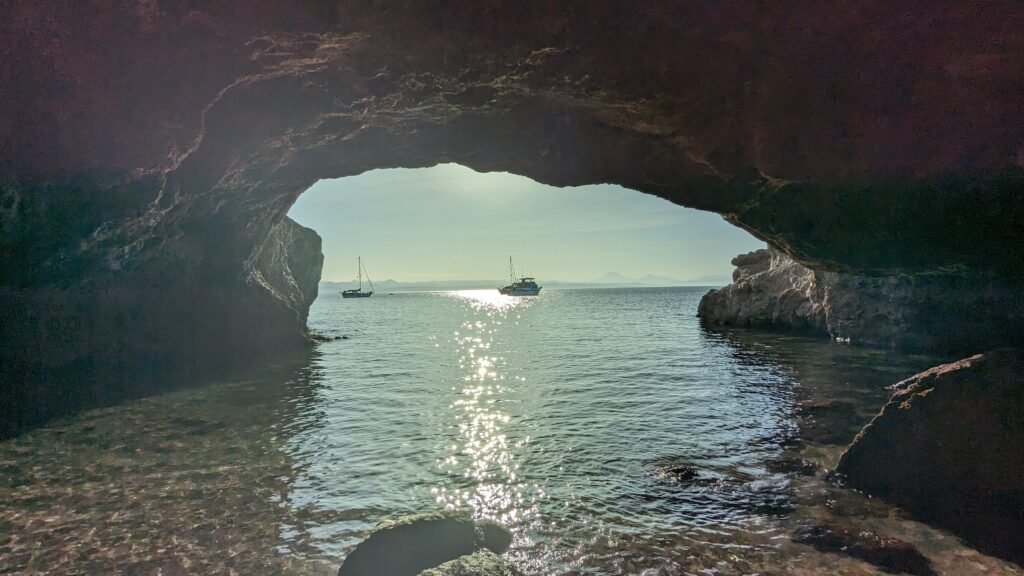
We joined up with Sarra, a Kiwi woman friend on SV Ikigai, and her South African/American boat buddies Patrick and Ellen on their motor launch Maitairoa. Over the past year we had already shared anchorages at San Carlos, San Perdro Martir Island, Guayamas and tonight’s northern destination, San Franciscito Bay, so we needed a few dinner and beach sessions to catch up again.

When we ran out of essentials it was time to cross the bay. We knew our way around Santa Rosalia from last year’s visit, so Nico immediately made us head to the marina’s small rooftop pool where he would spend hours every day. Our water boy impressed fellow sailors by diving the length of the pool underwater, only kicking his feet.
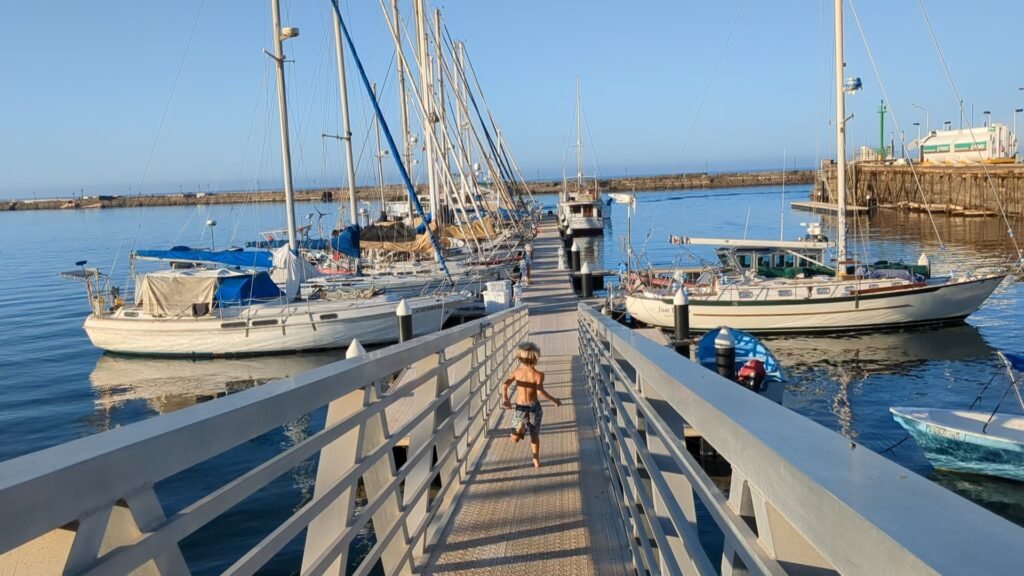
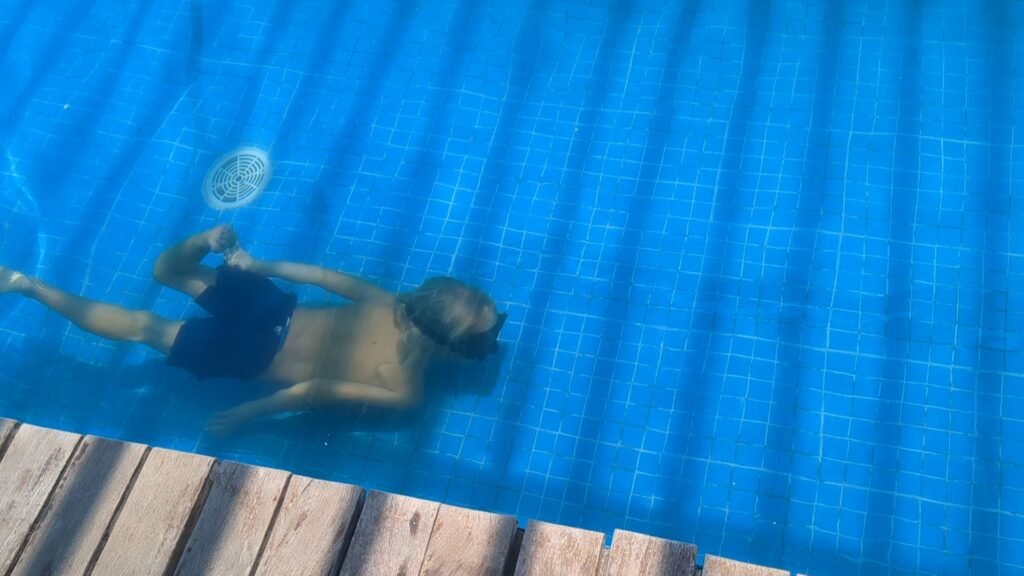
So of course we celebrated Nico’s sixth birthday by the pool, where we were joined by a Mexican family we had befriended one evening on the waterfront.
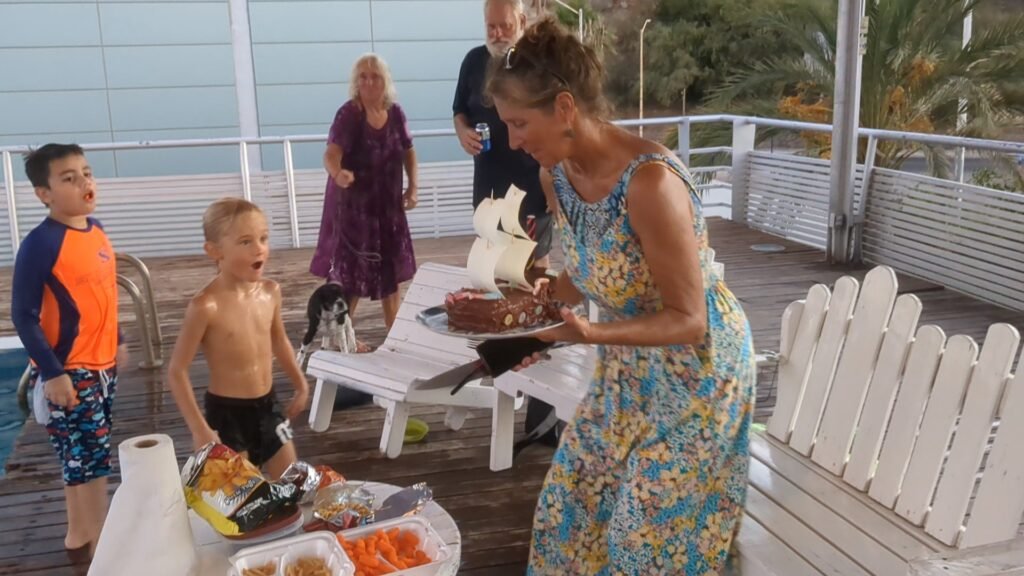
Santa Rosalia was built by a French mining company in the 19th century who for a period of time operated a large copper smelter here. Mining continues but outside town now. Left behind are the tilting scoria depot, the rusting smelter and many abandoned buildings.

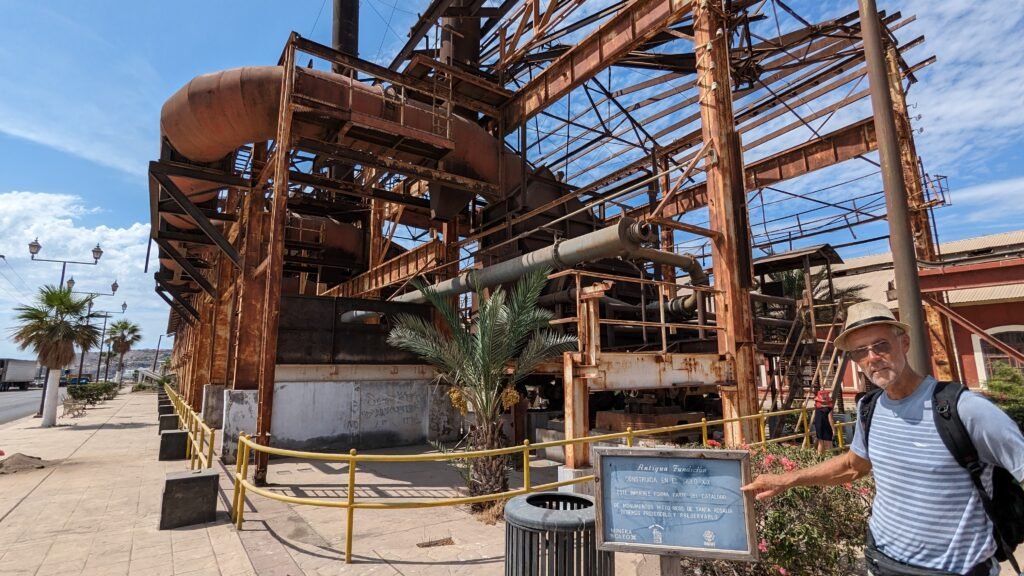

Over the preceding days the heat wave sweltering over Mexico and large parts of the US finally caught up with us. To help us suppress heat rashes and give our bodies time to acclimatize, we had moved into an airconditioned Airbnb nearby. That also gave us space to work on the windvane and the watermaker.

We were also able to receive a package with spare parts and some other essentials sent from the US. Fortunately that included new brushes for the anchor winch motor which was starting to fail again.

The heat was also straining our refrigerators and solar power supply to the limit. We had tried to cover the steel hull near the fridge by hanging a white tarp over the side to reflect some radiation. Nacho the local sign maker came stuck on white vinyl to make it look more aesthetic and be less prone to disintegrating in the sun.
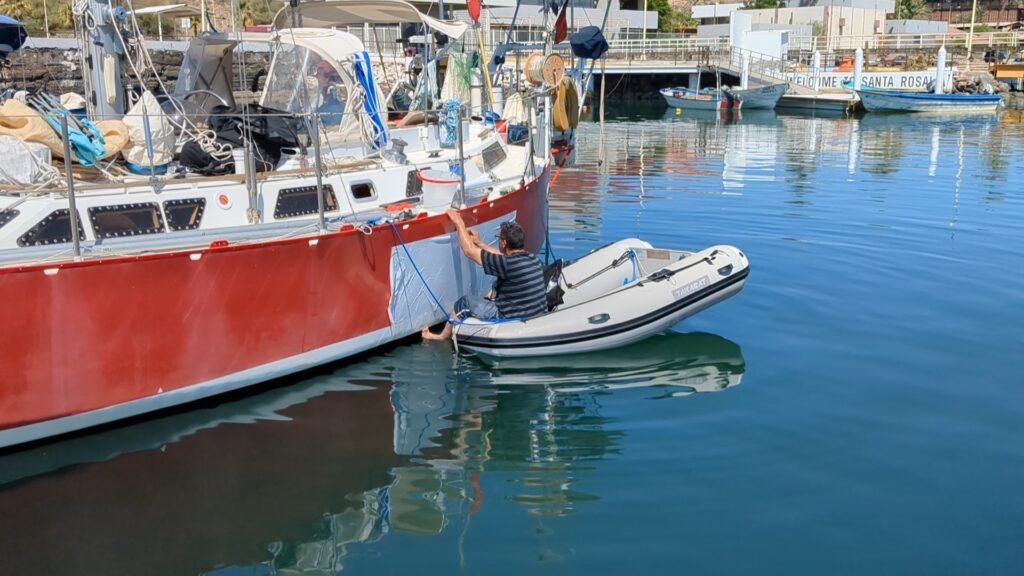
So now, with provisions from the local supermarket on board, water, gas and fuel topped up, we are ready to head into the Mid Riff Islands and the Bahia de Los Angeles to swim with whale sharks again. Think of it as a cross between Great Barrier Island and the Bay of Islands without the tourists. Here’s finger crossed that statistics will be on our side and we have no hurricane encounters over the next two months, the peak of the storm season.
